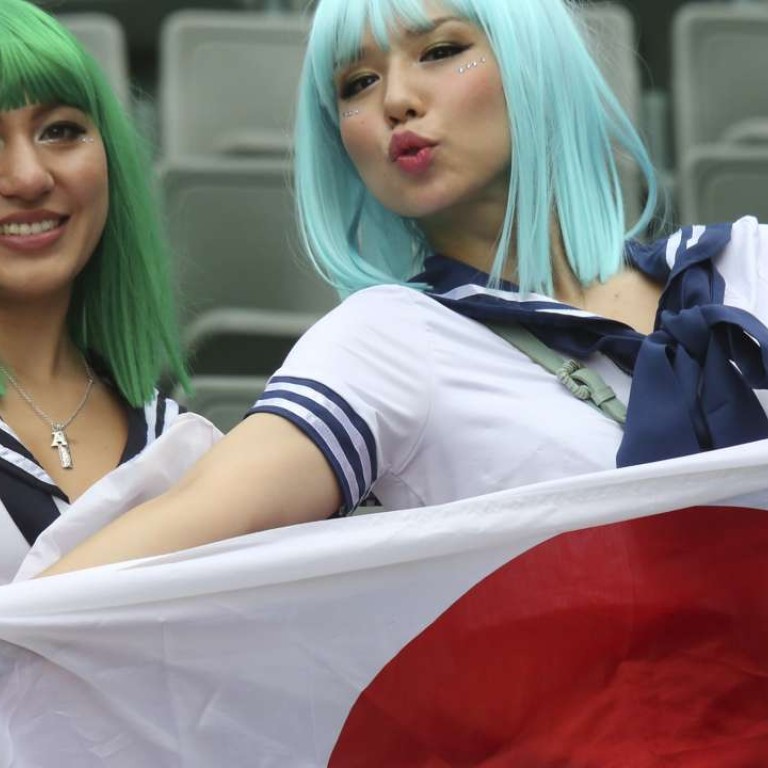
Why the future of rugby is Asia – and how the Hong Kong Sevens helped make it so
With the upcoming World Cup in 2019 and Summer Olympic Sevens event in 2020 coming to Japan, rugby prepares to finally and firmly tackle new frontiers
Rugby’s a different game now. It comes to Hong Kong this week featuring Olympic medallists for the first time after the sport’s biggest international exposure at the 2016 Summer Games. There’s no looking back.
Purists may deride the fact that sevens, as opposed to 15s, has become the vehicle for global growth of the game. But while you certainly never want to desert your core, the riveting pace and festive ambience of sevens takes the game to places traditional rugby could only dream of.
Large parts of the world got their first look at sevens in Rio and the feedback was universally positive. USA Today writer Nate Scott wrote, “This is the most thrilling sport you’ve ever seen.” Of course he was just echoing what we have long known here in Hong Kong, the ancestral home of the modern sevens game. It’s important to look at where the sport has come from and where it is going.
The next two major events on the rugby calendar, the 2019 World Cup and the 2020 Summer Olympics, will be in Japan, so the game is Asia-bound. For far too long the parochial confines of 15s have hemmed in the growth of the sport.

The previous eight World Cups have been held in Australia, New Zealand, the UK, South Africa and France, all traditional rugby powers. Japan tried to elbow its way in when it bid for the 2011 World Cup but the powers that be were not yet ready to take their marquee event out of its comfort zone. They are now and not a moment too soon. For rugby, it should make little difference how the growth has been achieved, the important thing is that the game is spreading its wings.
The two most desirable growth markets have long been North America and Asia. Thanks to the fact that the US is now consciously pushing elite athletes into sevens, bounteous strides have been made in engaging the world’s largest economy and biggest media market.

In Asia it has been a somewhat different approach. Since we lack the deep pool of elite athletes, growing the sport has required creative ideas. The Hong Kong Sevens can rightly claim its place as the engine driving the growth of the game in Asia, built on the back of a wildly festive atmosphere in a wildly festive place.
Nate Ebner effect in full swing for Eagles as NFL stars help drive rugby’s popularity in the US
It was not only intoxicating for fans in the stands and viewers worldwide, but for the players as well. Many were used to toiling in front of three or four thousand spectators and now suddenly found themselves in front of 40,000 raucous fans.

And no one involved with the Hong Kong Sevens ever has to apologise for making it equal parts festive and sporting. Yes, you have to maintain the dignity of the event. But it’s imperative to engage and broaden a youthful demographic that constantly yearns for stimuli.
The NFL is the most lucrative sporting league in the world. Do you really think they have the likes of Lady Gaga, U2 and Bruce Springsteen playing at half-time at the Super Bowl to appease all the armchair quarterbacks? Of course not, they want to make it a cultural event because they know the sporting side will take care of itself.
Hong Kong Sevens 2017 countdown blog – follow all the build-up to the greatest sporting show in town
What makes this now seminal event here in Hong Kong even more heartening is the fact that the local rugby community has used the visibility of the sevens to help build a number of youth leagues. There are now thousands of kids, both local and expats, playing mini rugby in atown that traditionally has put little emphasis on physical activity.
Rugby is now in the home stretch in Asia with the big shows on the horizon. There is much work to do because there are so many other sporting and entertainment options. But one thing cannot be marginalised and that is the debt that rugby owes to Hong Kong and this event.

